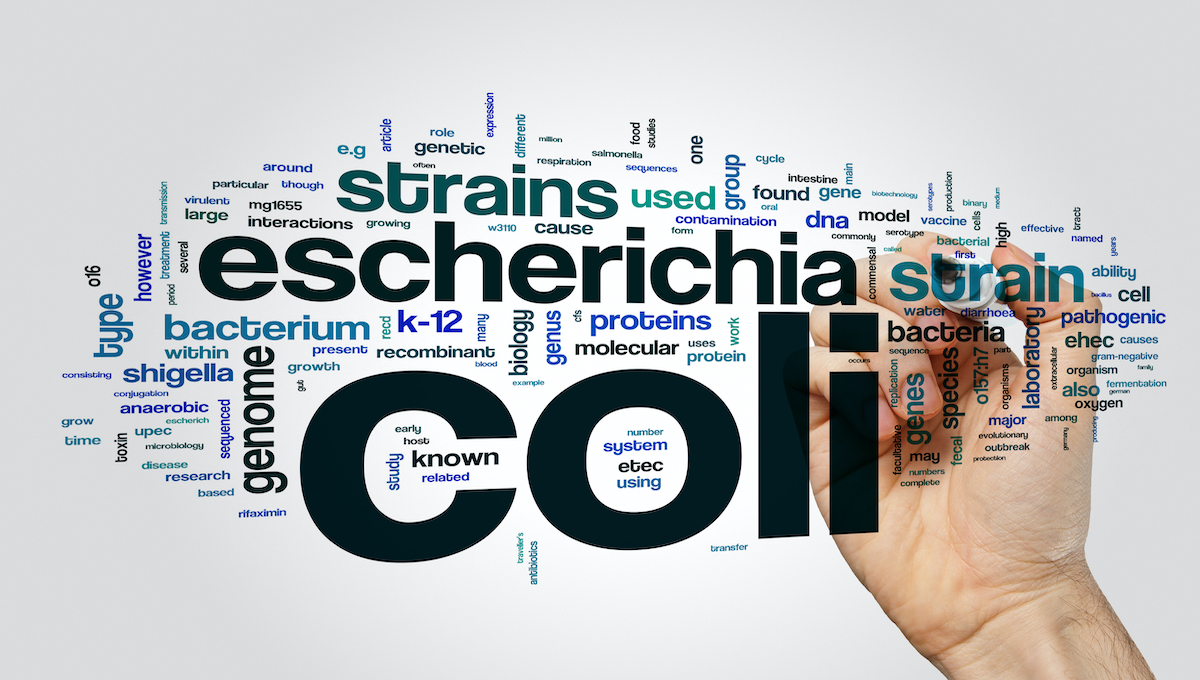It is likely that the COVID-19 pandemic contributed to a 25 percent drop in E. coli O157 cases in England in 2020 compared to 2019, according to numbers recently released by the UK Health Security Agency (UKHSA).
In 2020, 1,419 confirmed cases of Shiga toxin-producing E. coli (STEC) were reported in England and Wales. This included 402 culture-confirmed cases of E. coli O157 and 690, where a serogroup other than O157 was isolated. Five people died. For another 329 cases, samples tested positive by PCR for Shiga toxin genes, but STEC was not cultured. In 2019, 539 E. coli O157 and 768 non-O157 infections were noted.
Transmission can occur through direct or indirect contact with animals or their environments, consumption of contaminated food or water, and person-to-person spread.
Seven confirmed cases were infected with multiple types in 2020, including O145 and O157; O26 and O157; O26 and O168; O91 and O146 and O87 and O113. It is the lowest rate reported since 1996 when testing began in England for STEC O157 on all fecal specimens from patients with suspected gastrointestinal infection. However, it is probable that the pandemic played a role, so the trend should be interpreted with caution, said health officials.
E. coli O157 data
Of 365 confirmed STEC O157 cases in England, 195 were female. Children aged 5 to 9 had the highest incidence of infection. Those aged 1 to 4 had been the most affected in previous years.
Hemolytic Uremic Syndrome (HUS) occurred in 10 confirmed STEC O157 cases. Two HUS cases were under 5 years old, with a range of 1 to 93. Two deaths were reported among confirmed cases.
The decline in reported foreign travel by STEC O157 cases from 30 percent in previous years to eight percent in 2020 indicated limited travel abroad.
The highest incidence was in the South West, and the lowest was in London. Hospitalization occurred in 121, or a third, of cases with duration ranging from one to 14 days with a median of three days.
A drop in travel-related infections was observed, with only 30 people reporting being abroad during their incubation period, which was seven days prior to onset, compared to 28 percent and 31 percent in 2018 and 2019, respectively. Of those 30, five spent their entire incubation period abroad. The most frequent destinations included Turkey, Spain, and Malta.
In England, 557 culture-positive cases of 95 different serogroups were confirmed, and in Wales, the amount was 132 cases of 53 different types.
In total, 85 non-O157 STEC cases were hospitalized. HUS occurred in 28 confirmed cases. The most frequently isolated serogroups were O26 10 times and O145 on four occasions. HUS cases ranged from 10 months to 6 years old and 10 were between 1 and 4. Three people died.
Non-O157 figures
Detection of non-O157 STEC infections decreased compared to 2019. The most commonly isolated serogroup was STEC O26, followed by O146 and O91.
Ten percent of confirmed O26 cases developed HUS compared to 3 percent of confirmed O157 cases, and a higher proportion of O26 cases reported hospitalization compared to O157 patients.
In August 2020, UKHSA, Public Health Scotland (PHS), and Public Health Wales (PHW) investigated an outbreak with 20 confirmed cases, of which 15 were from England, four in Wales and one in Scotland. The median age was 42 years old. Five people were hospitalized.
Three recorded outbreaks
Three E. coli O157 outbreaks involving 63 cases were reported in 2020, but no related HUS cases or deaths were reported.
UKHSA and PHW investigated another outbreak and identified the vehicle of infection as imported cucumbers consumed as part of a fast-food product. There were 36 confirmed cases, of which 27 lived in England and nine in Wales. Thirteen people reported being hospitalized.
UKHSA investigated a third outbreak with 18 confirmed cases. Three people were hospitalized, but the source was not found.
(To sign up for a free subscription to Food Safety News, click here.)

